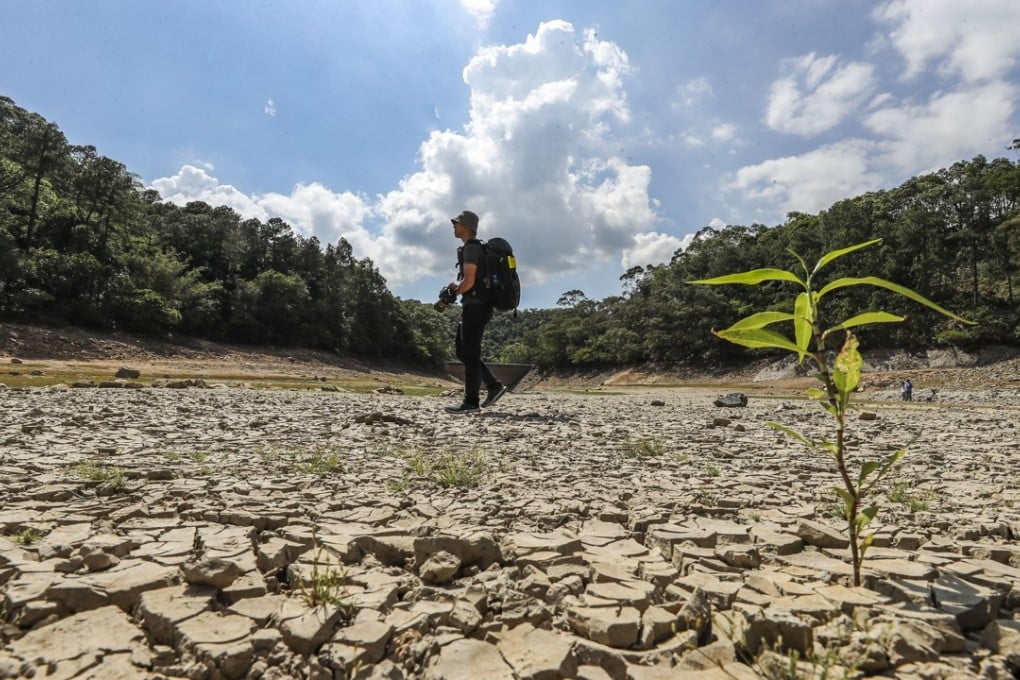Record-breaking heatwave hits 10th day in Hong Kong as new photos show barren reservoir where scenic hiking spot was
Lau Shui Heung Reservoir now so dried-up it can be walked across

Hong Kong’s record-breaking heatwave pressed on for a tenth straight day on Saturday, as new Post photos showed a barren reservoir in what was usually a scenic hiking spot.
Hikers who would usually make their way around the picturesque dam at the Lau Shui Heung Reservoir in the New Territories could now walk across the exposed, cracked surface of its dried-up bed and leave behind their footprints.
Water levels could not be recorded for the months of April and May because the reservoir had completely dried up, according to official data from the Water Supplies Department.
By comparison, in May last year, levels were still maintained at 99.24 metres above Principal Datum, the level to which tide heights are referenced in Hong Kong.
Another picture showed a hiker standing at the banks of the Tai Tam Upper Reservoir, formerly covered with water, revealing layers of watermarks on its yellowish outcrop exposed to the air.